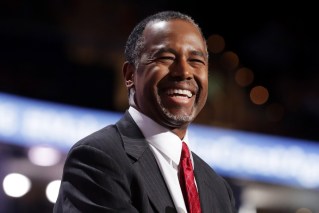Labor’s childcare plan the wrong policy at the right time


Labor's funding boost will at least arrive at the right time. Photo: Getty.
Now that Labor’s childcare policy is available to compare with the Coalition plan announced in this year’s budget, voters have to work out which is best for their household finances.
Busy parents are unlikely, however, to spend much time wondering about the policy’s effects in the longer term – on growth, budget sustainability or fairness.
Labor knows this, and so has gone ahead with a package that will keep parents across the income spectrum happy for the next year or two.
• Emergency wait times revealed
• Turnbull’s popularity dropping
• Tech meltdown causes chaos
And yet its package has weaknesses that would start to manifest beyond that timeframe.
The finer details of the two policies have been spelled out elsewhere, but the short version is that the Coalition has attempted to make the spiralling cost of childcare more sustainable and Labor hasn’t.
And ‘spiralling’ really is the word, because childcare fees have been caught in a positive feedback loop for 15 years.
Private childcare providers try to price their service so as to strike a balance between what they can supply, and the number of people willing to pay that price.
Like any business, when they are swamped with demand, they raise the price.
They’re not aiming to create a long waiting list of people willing to pay a low price, but rather to get the highest prices possible for the places they have. That’s the price at which the ‘marginal’ client rolls their eyes and seeks out another centre.
And that is what has happened – in the last major study of the sector by the National Centre for Social and Economic Modelling (NATSEM), 89 per cent of long daycare providers had vacancies.

Many childcare centres have vacancies, at a price. Photo: Getty
That means that centres have raised prices to the point at which they maximise their revenue. If one of them knocked 25 per cent off their prices, they’d have no vacancies and a waiting list hundreds of names long.
The great childcare auction
The problem with the current funding model for childcare, made up of the Child Care Benefit and Child Care Rebate, is that the more governments of both political persuasions have increased funding, the more money parents have had available to bid up prices.
In gross terms – that is, before subsidies are subtracted – they’ve been increasing at about 10 per cent a year since the year 2000, while general inflation averaged just under 3 per cent.
The Coalition has tried to partially break this cycle by combining the non-means-tested Child Care Rebate and means-tested Child Care Benefit into a single payment – and then means-tested that single payment.
While it has been criticised for making the minimum-payment threshold too high ($320,000), it is at least a step towards ending uncapped ‘out-of-pocket’ subsidies to the very wealthy. It’s what you might have expected Labor to do.
In fact, Labor’s policy fails to reform the dual-subsidy model increases the payments of both subsidies, and leaves the rebate payment uncapped to keep benefiting the wealthy – something many would have expected the Liberal Party to have done.
Labor’s policy is sure to be popular with parents, because it would start from January 1 next year and pour up to $1627 per child per year in family bank accounts, much of which will then cascade into the bank accounts of the childcare providers.
Is it childcare or stimulus?
Labor’s plan is a short-term fix at best because it won’t address affordability in the longer term.
That said, the short-term impact of Labor’s policy is likely to be good, due to some positive side effects.

Labor’s funding boost will at least arrive at the right time. Photo: Getty
As I have argued elsewhere, we are in extraordinary times. The terms-of-trade are still plummeting, full-time jobs are being replaced by part-time, total hours worked and national income per capita is waning.
In that context, Labor’s childcare package will effectively be a stimulus splurge targeted at households with young children.
Both side of politics have ratcheted up the level of childcare funding at this election, though the Coalition has done more to stop it flowing to very high income earners.
But the big difference with Labor’s package is that the money would arrive in six months’ time, just when it’s needed, while the Coalition has delayed its subsidy hike to 2018.
Voters are being asked to take the money now, or start to repair a flawed policy in two years’ time.
As household budgets stretch ever tighter, that could make the Labor plan a winner.







